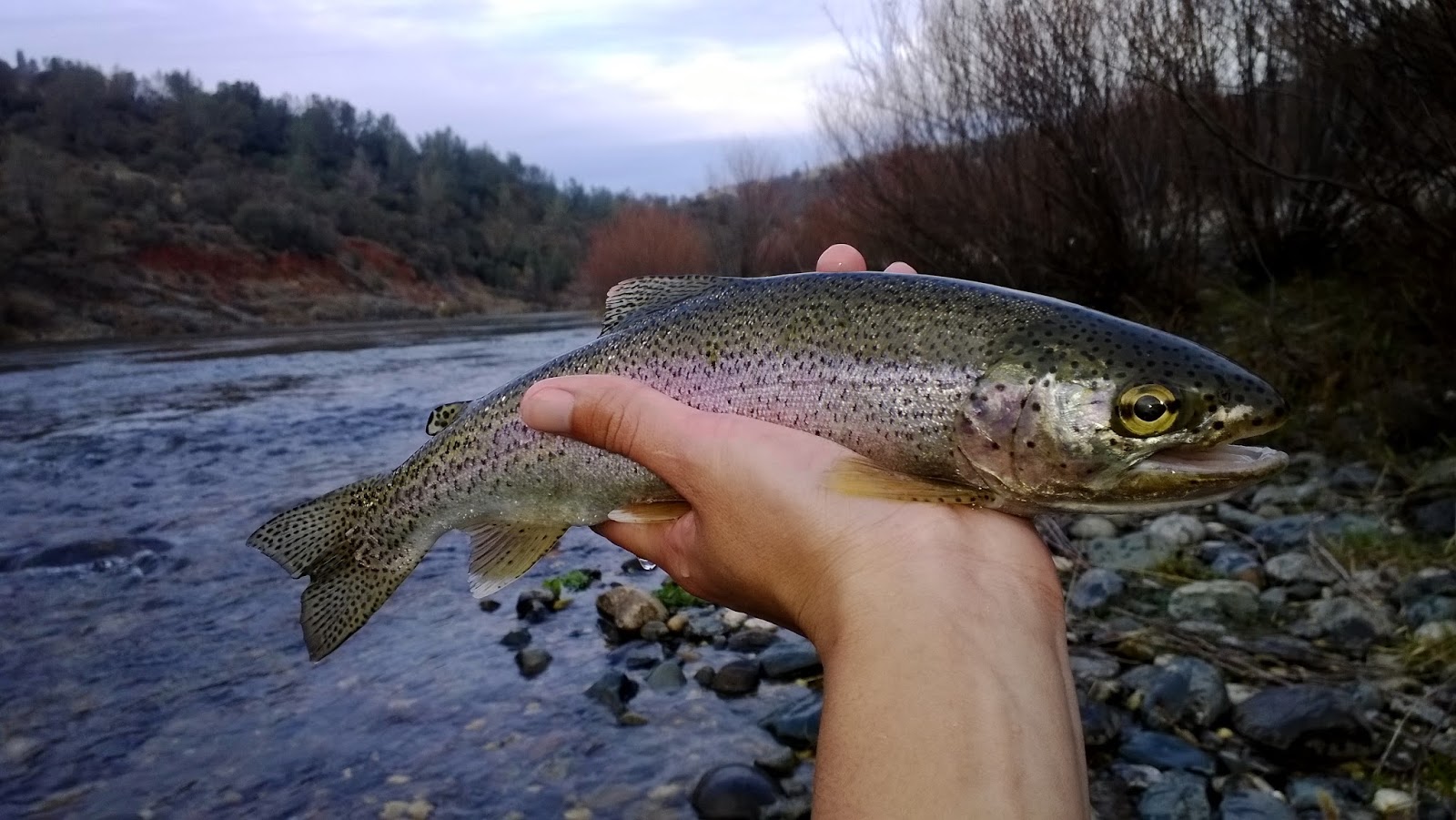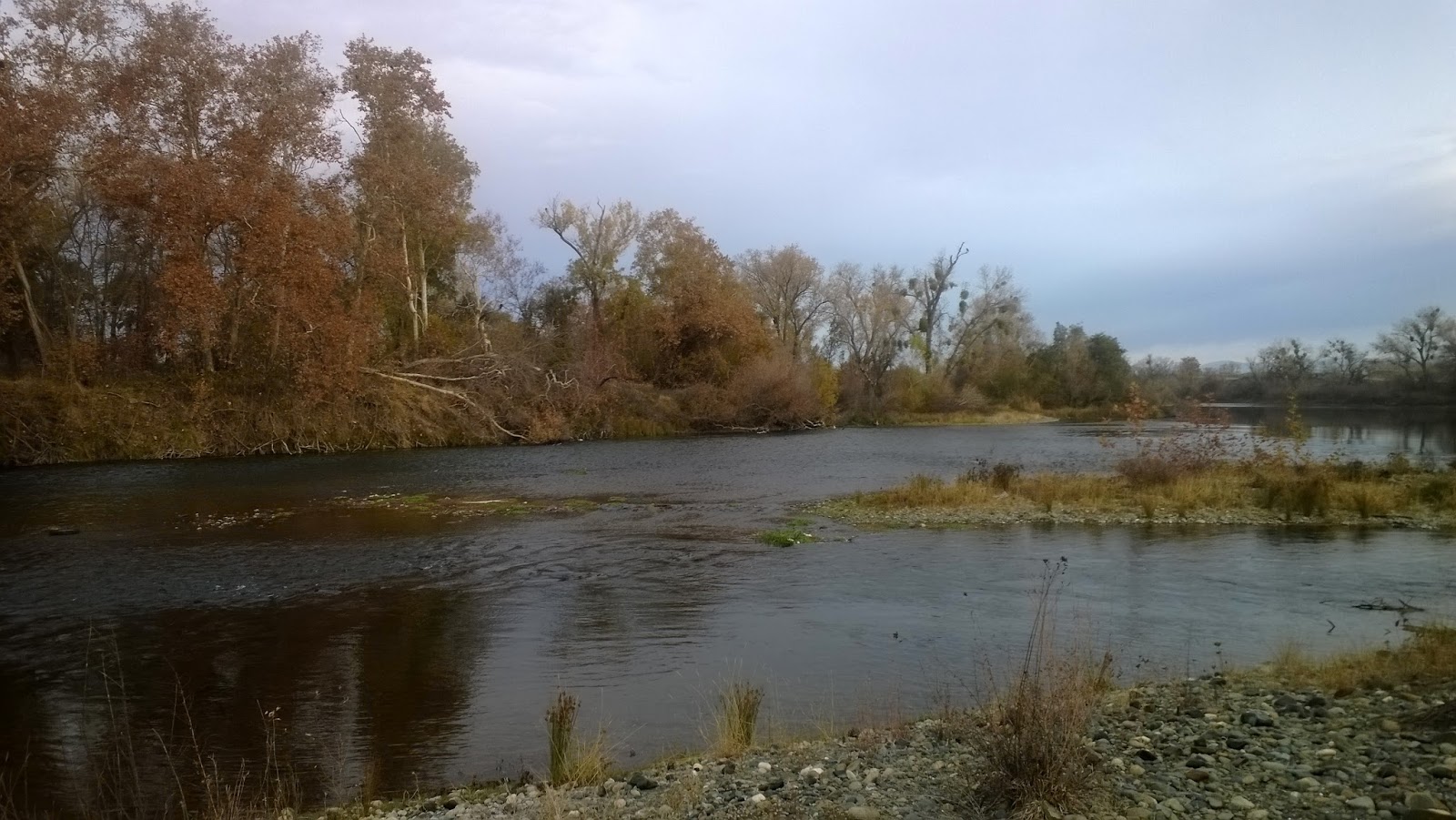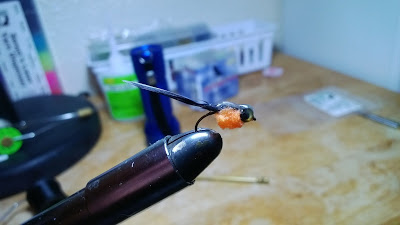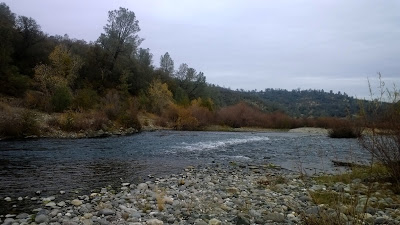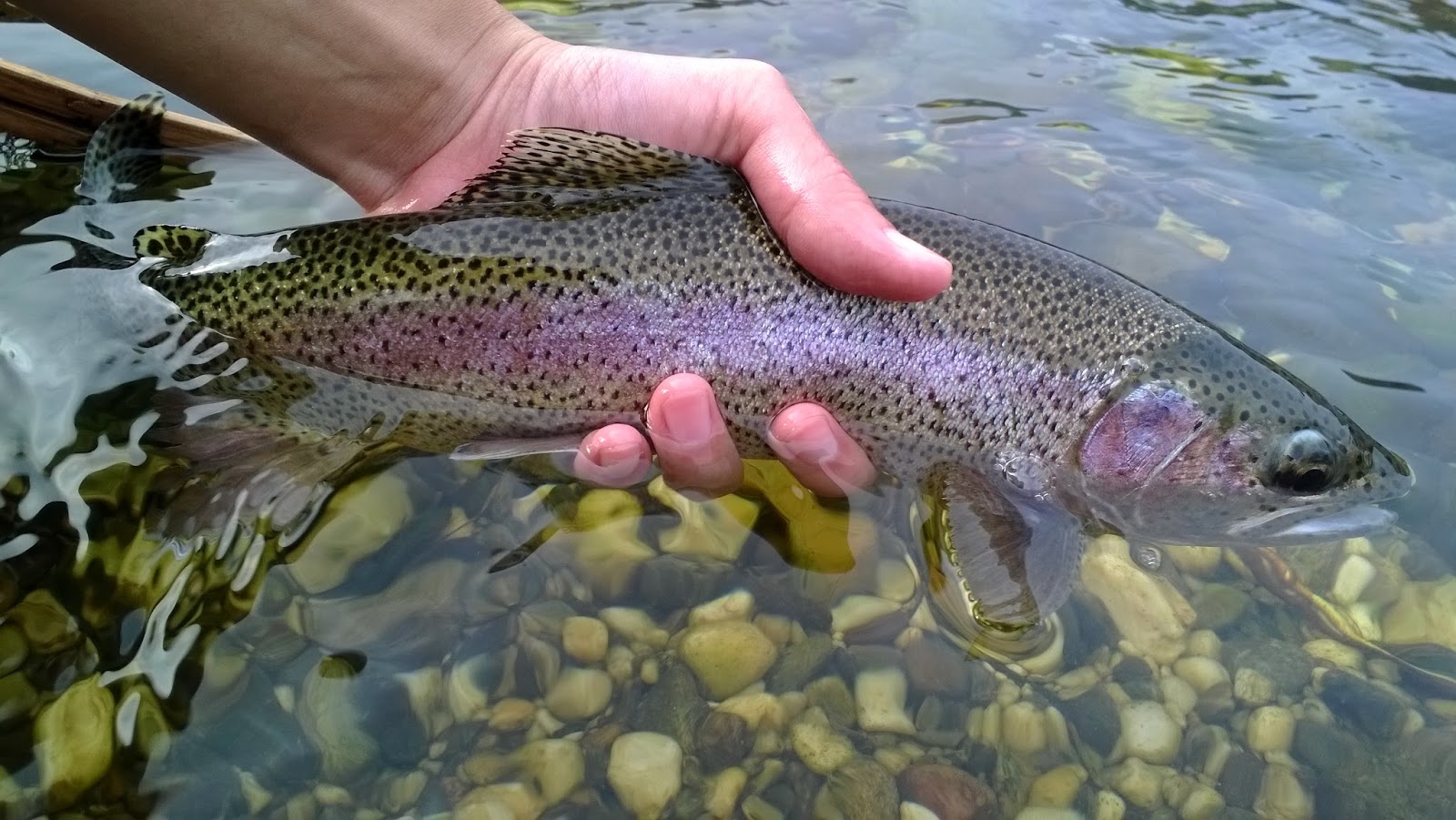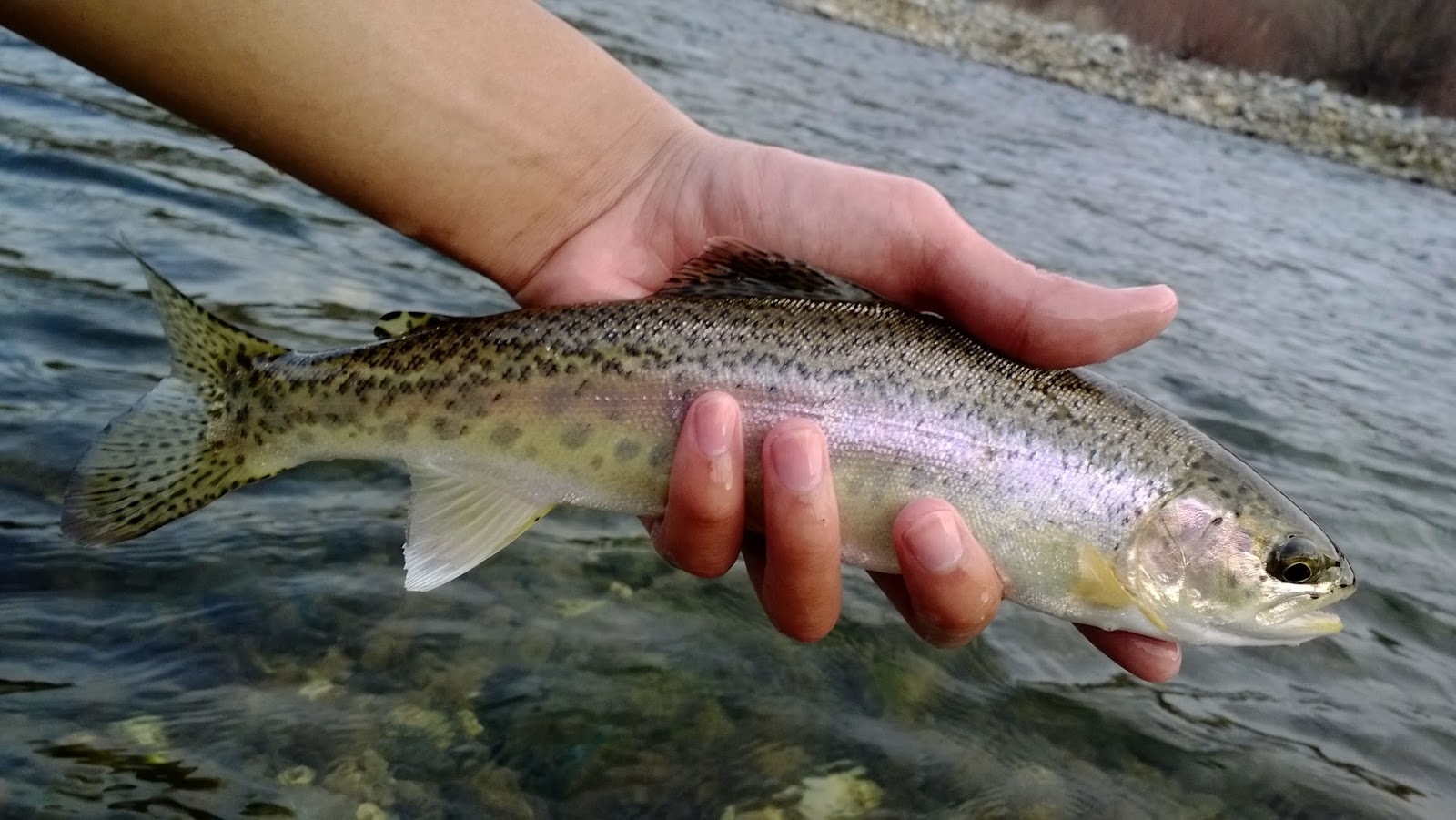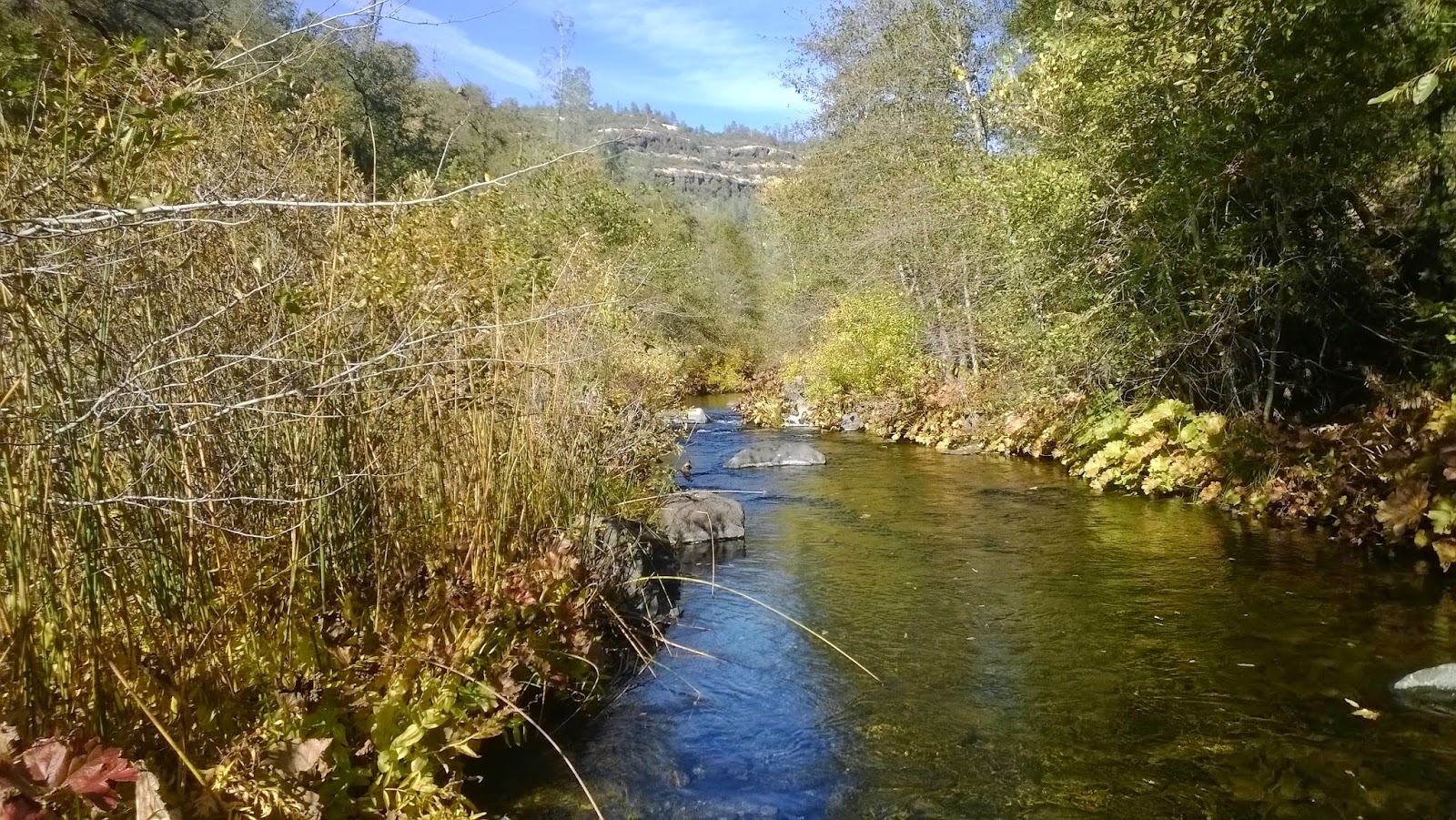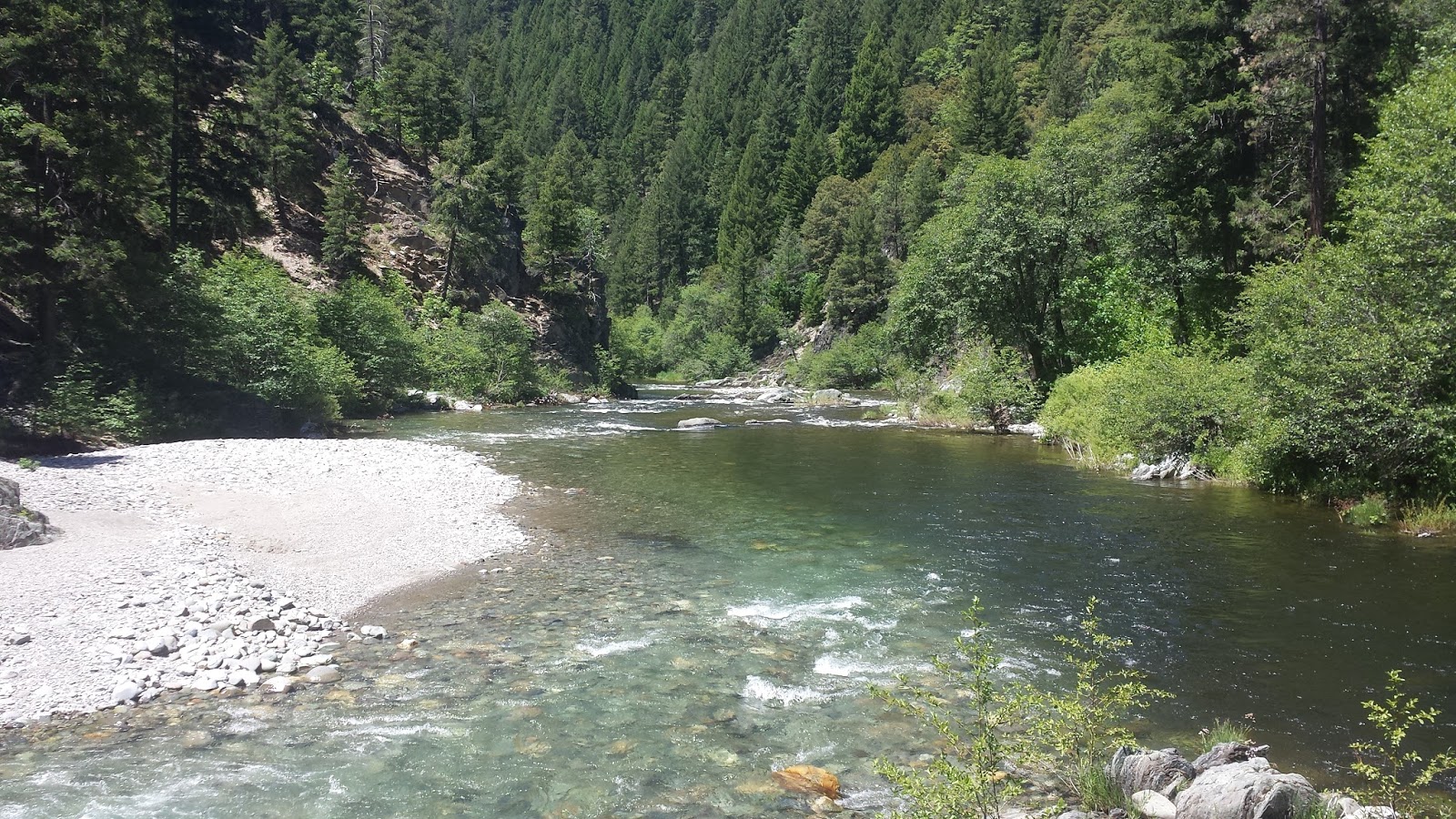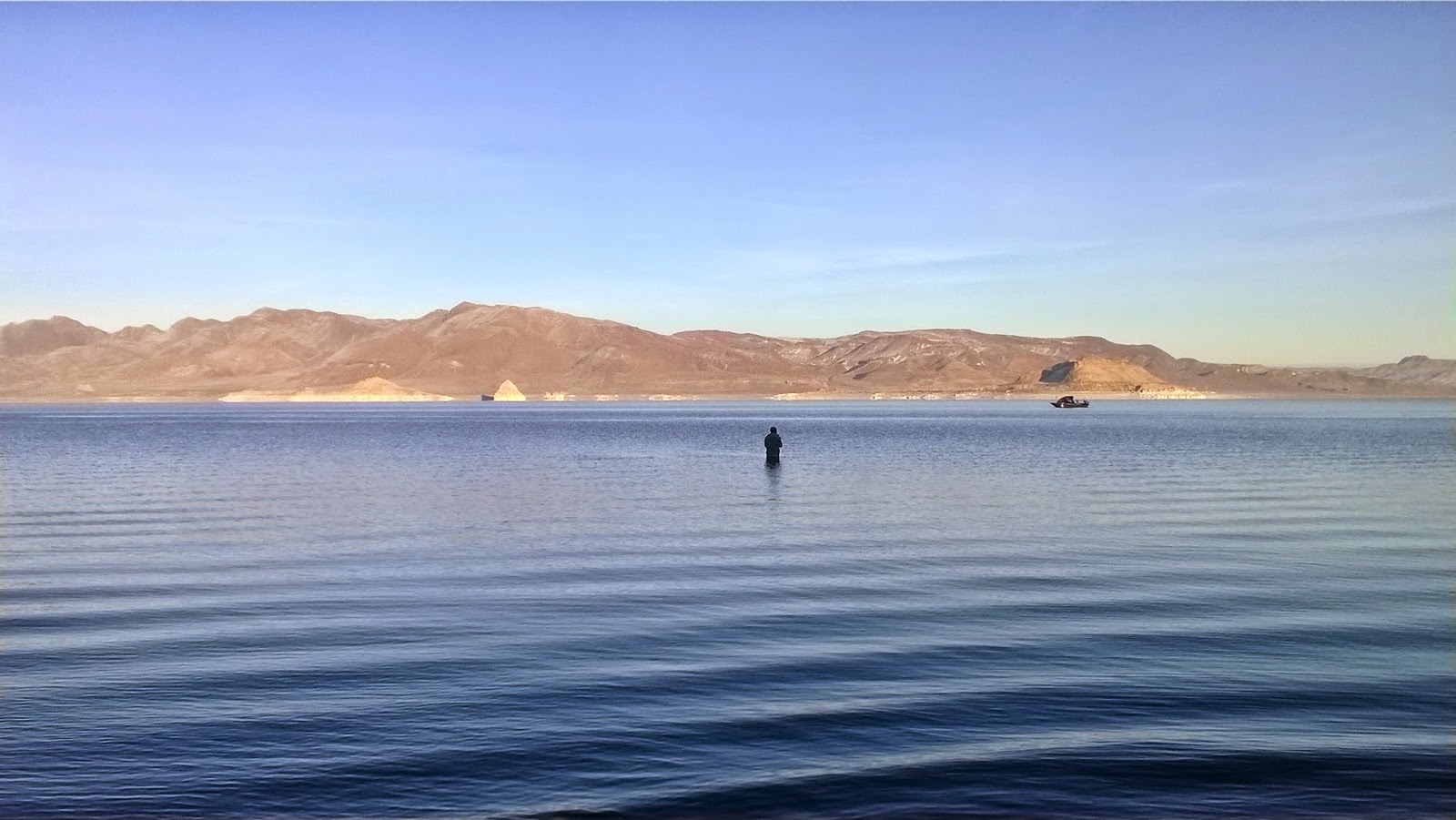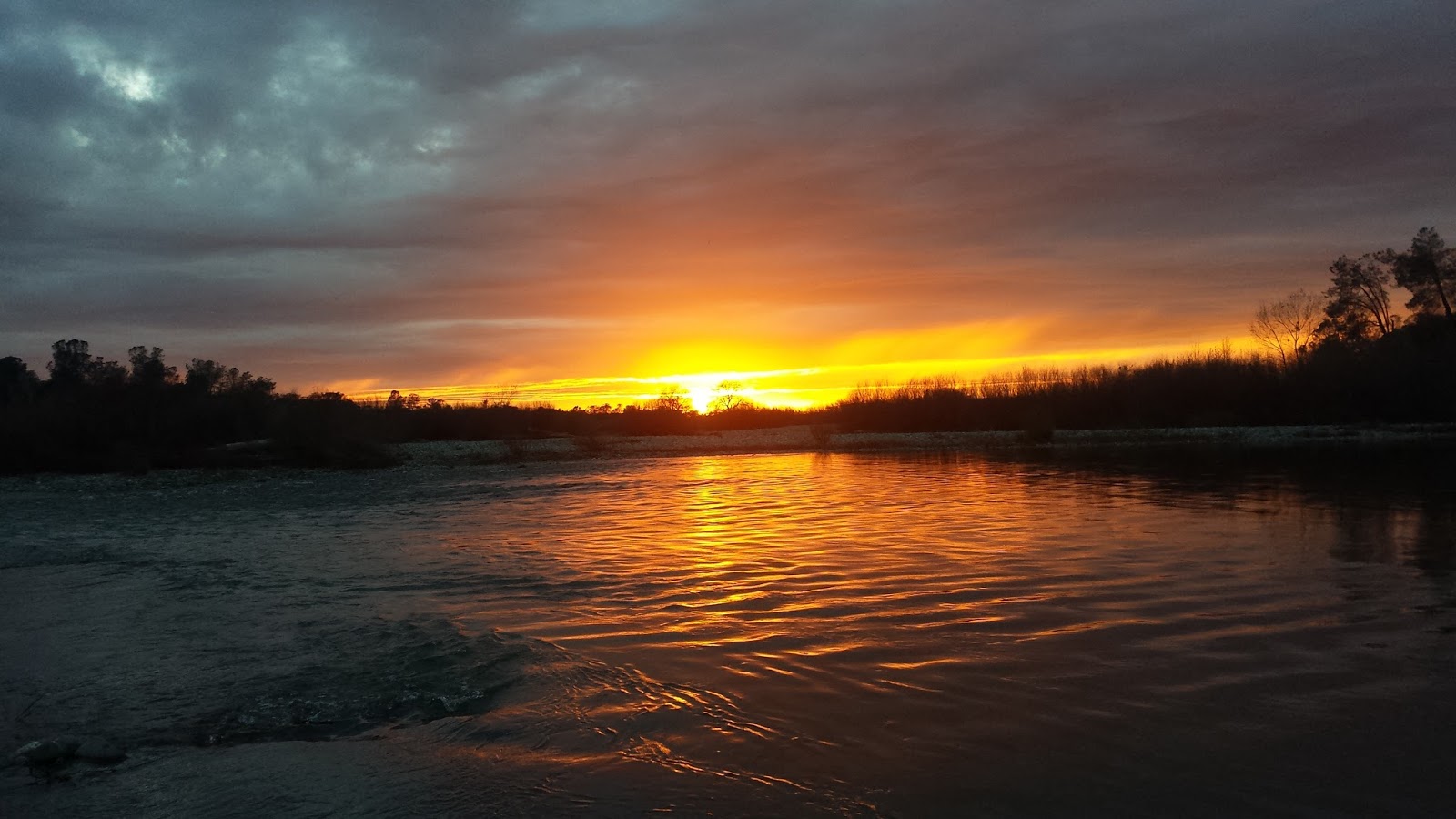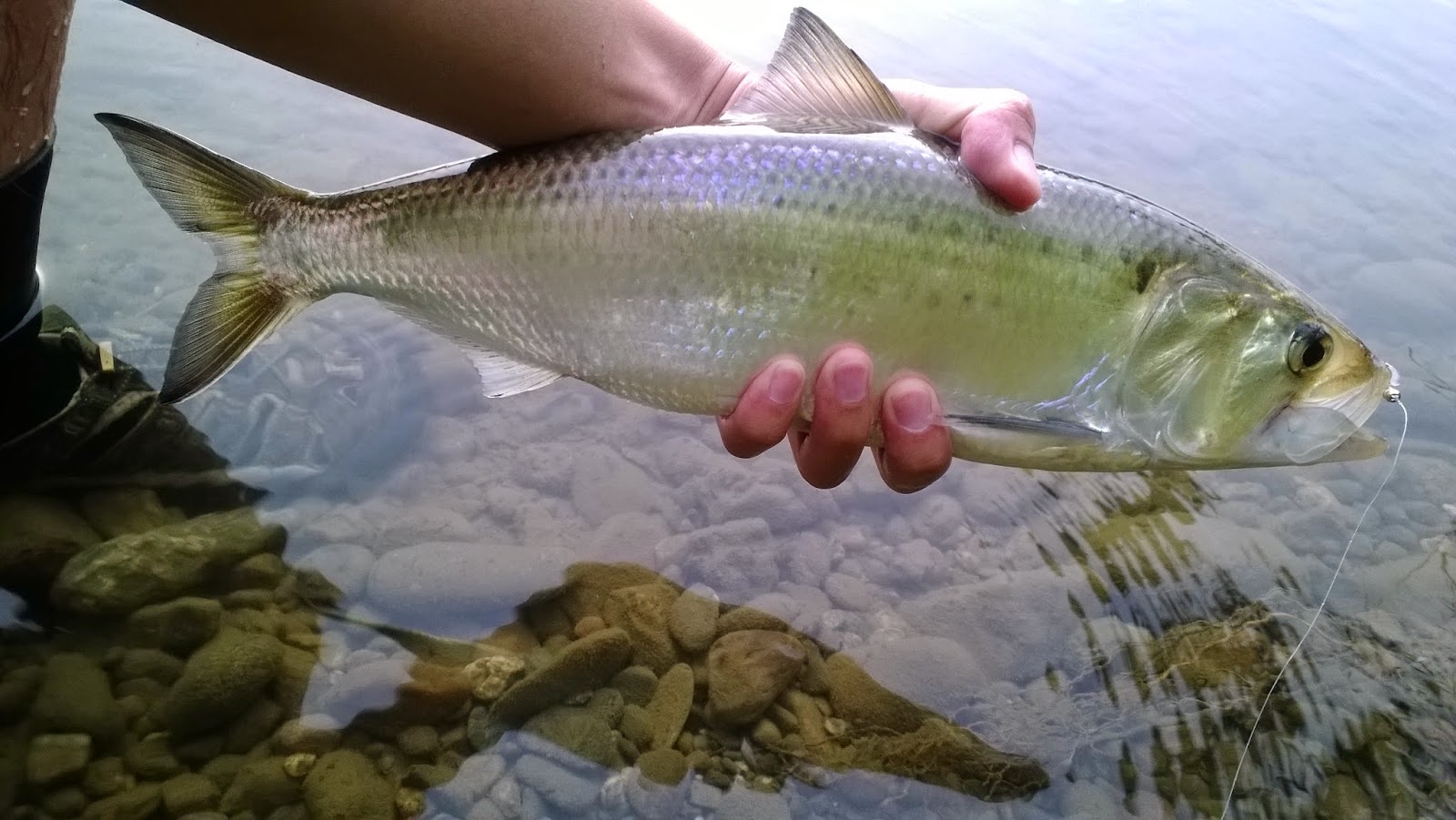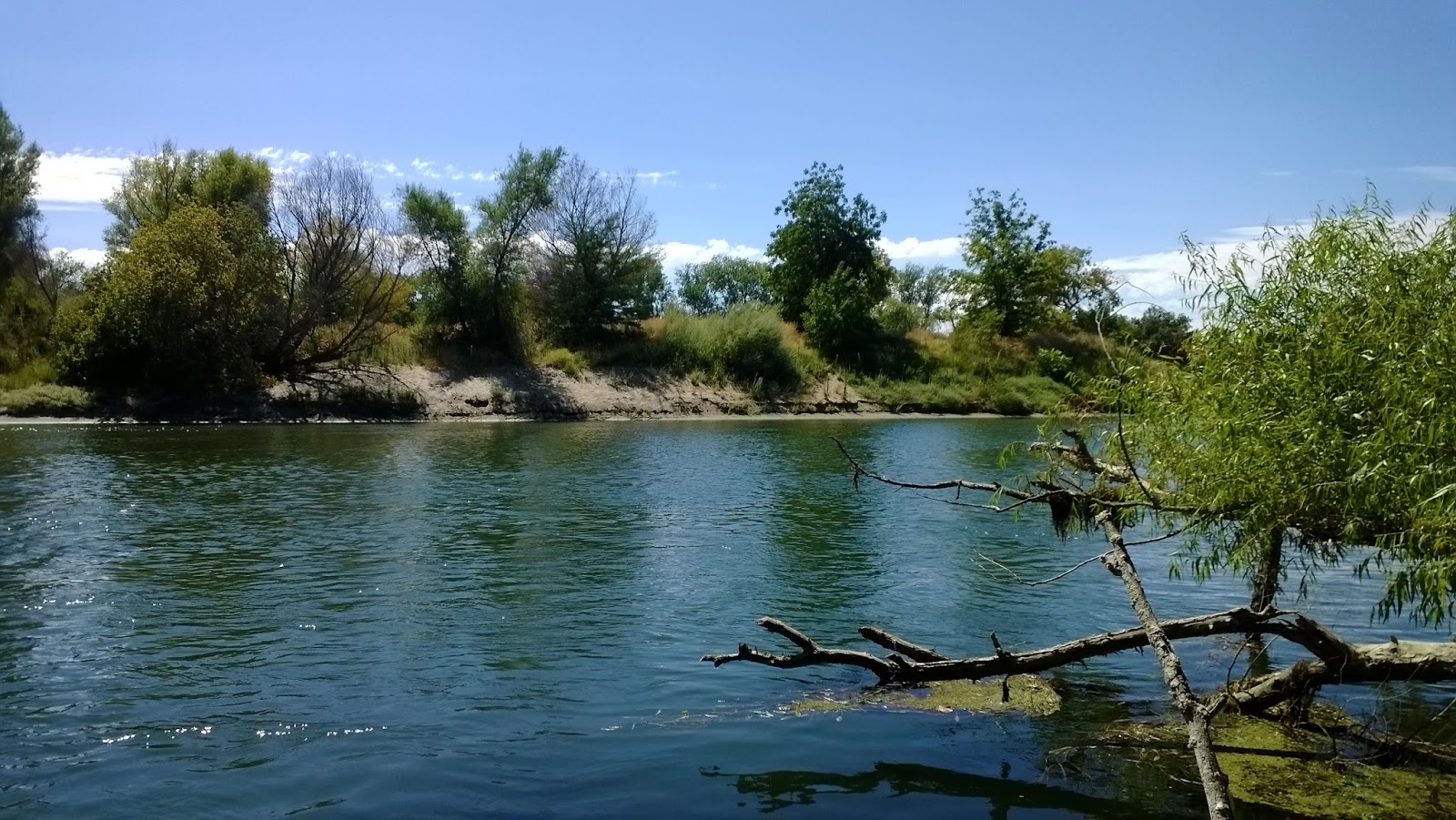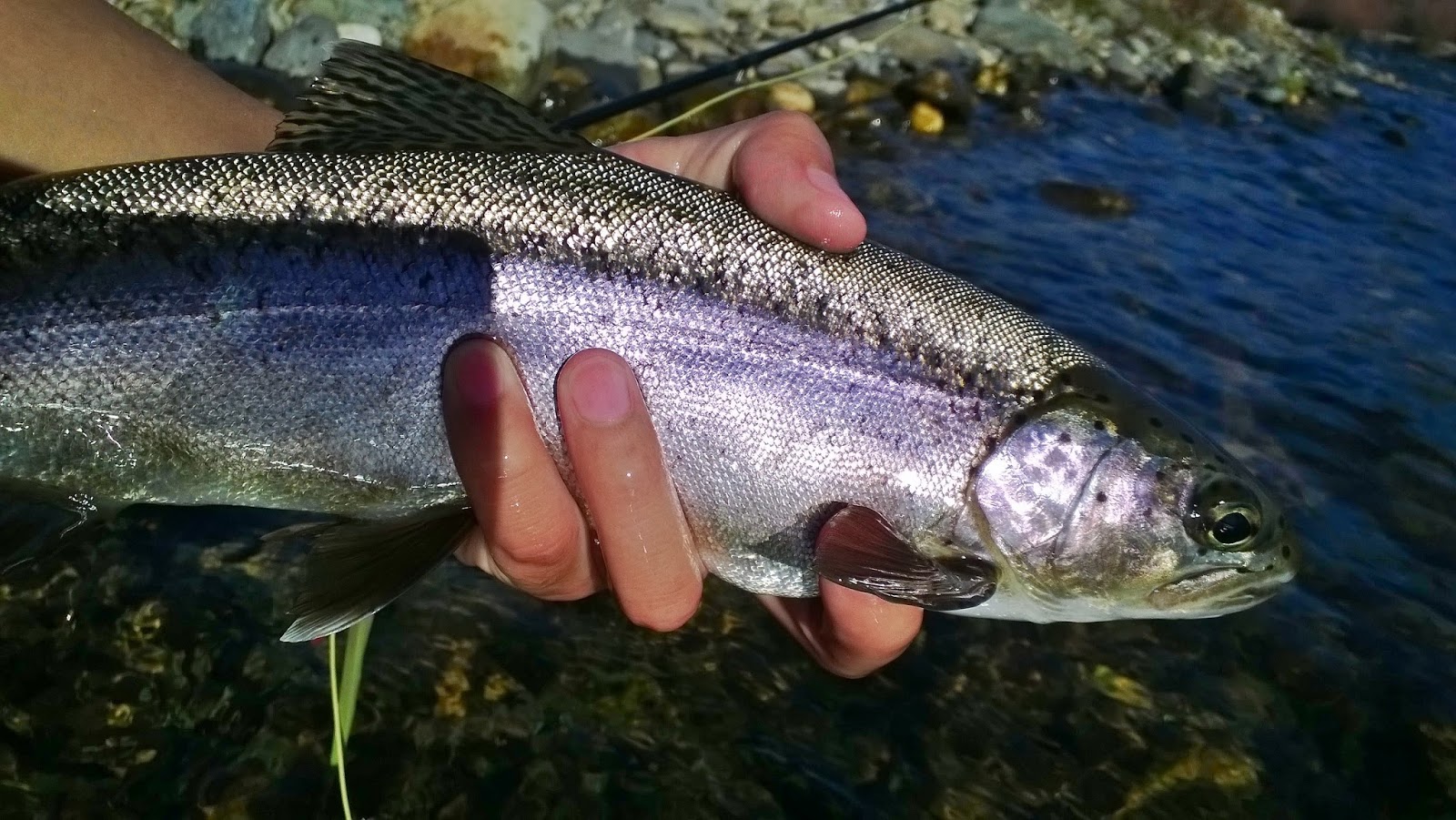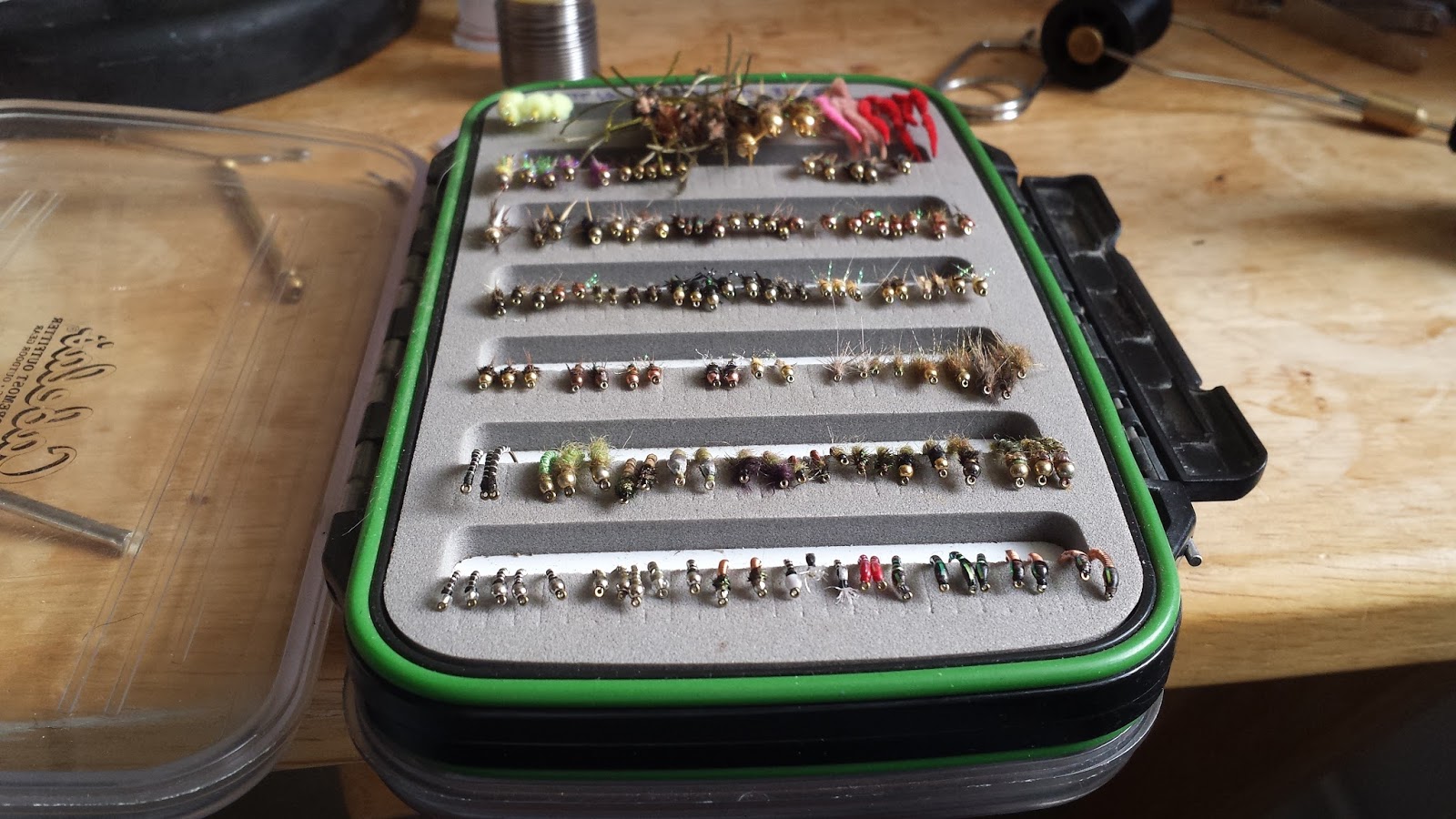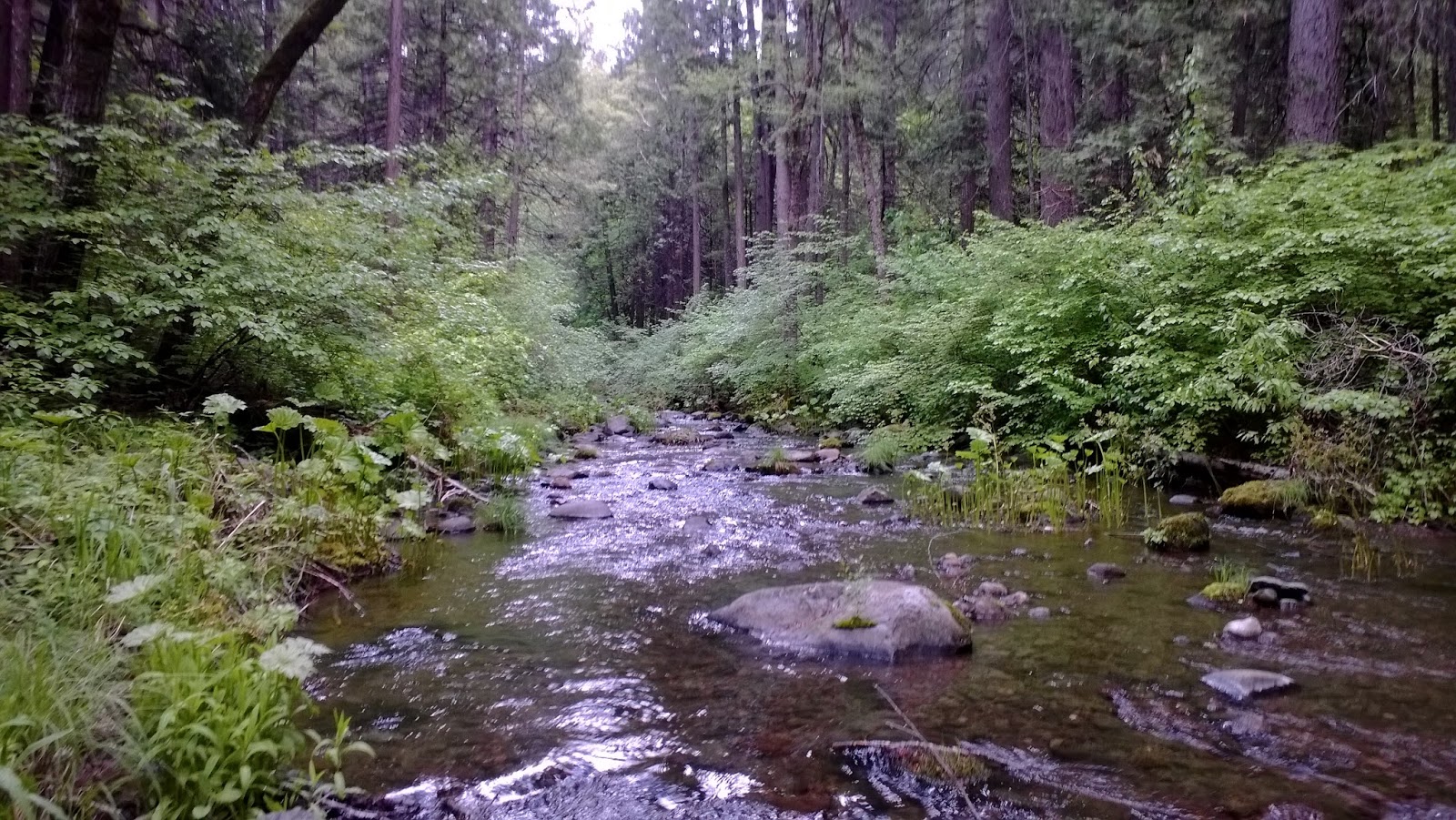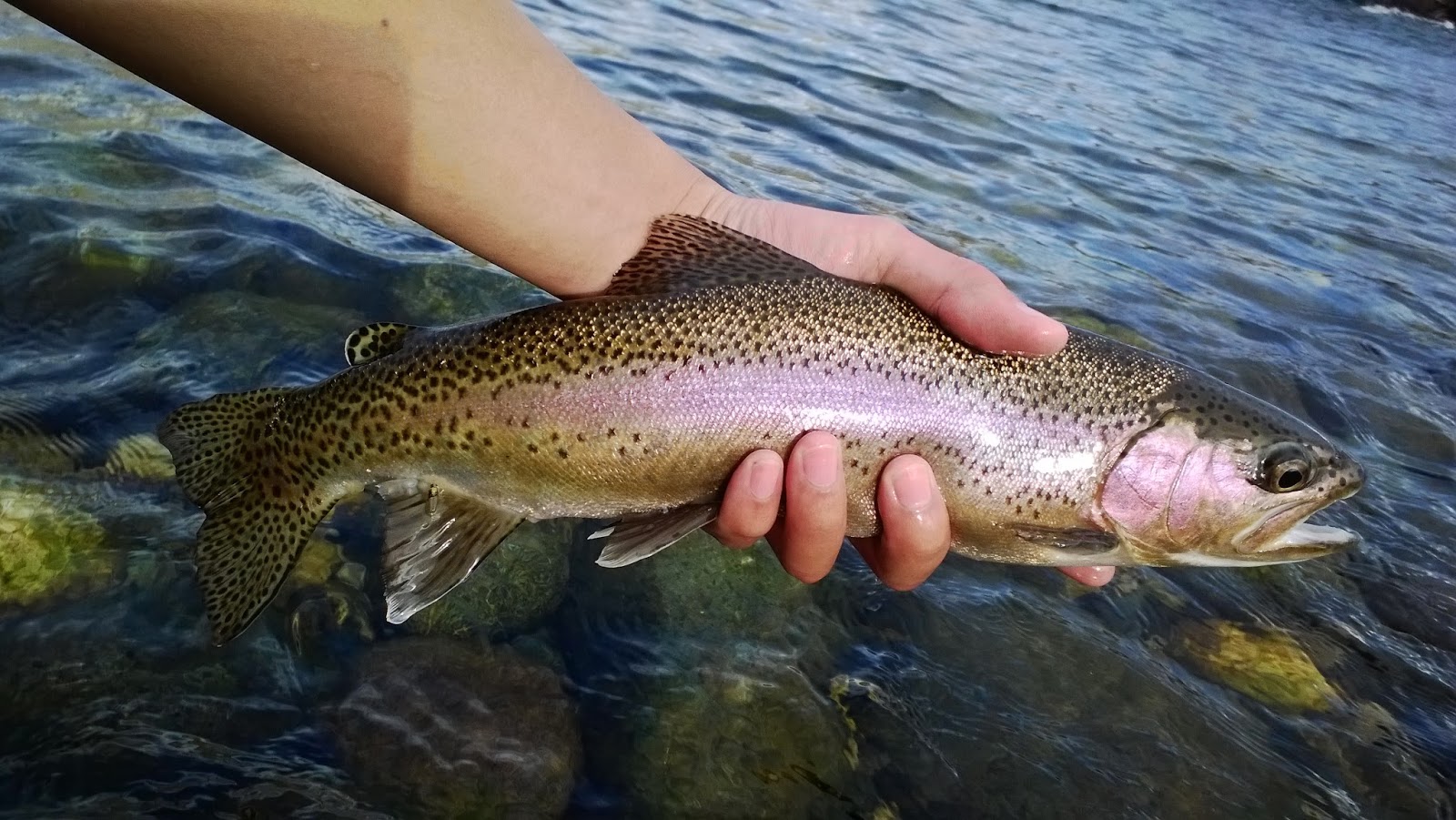 |
| Solid 17” Winter Bow |
During my recent outing to the Yuba this week I was really trying to figure out the trick to these winter trout. The water is very low this year sitting at ~580 CFS and without any winter blowouts, the fishing has been pretty lackluster. I haven’t gone home skunk but the fish are really concentrated in certain parts of the river at the moment.
A lot of anglers have been fishing the section above the bridge. The holes, riffles, and runs that I can usually pull a fish or two out of haven’t been very productive for me. I know there are fish there but I haven’t quite figured out what they want to see.
Blue winged olives both in nymph and dry form have been the ticket but I have been getting at few with a stonefly rubber legs pattern here and there.
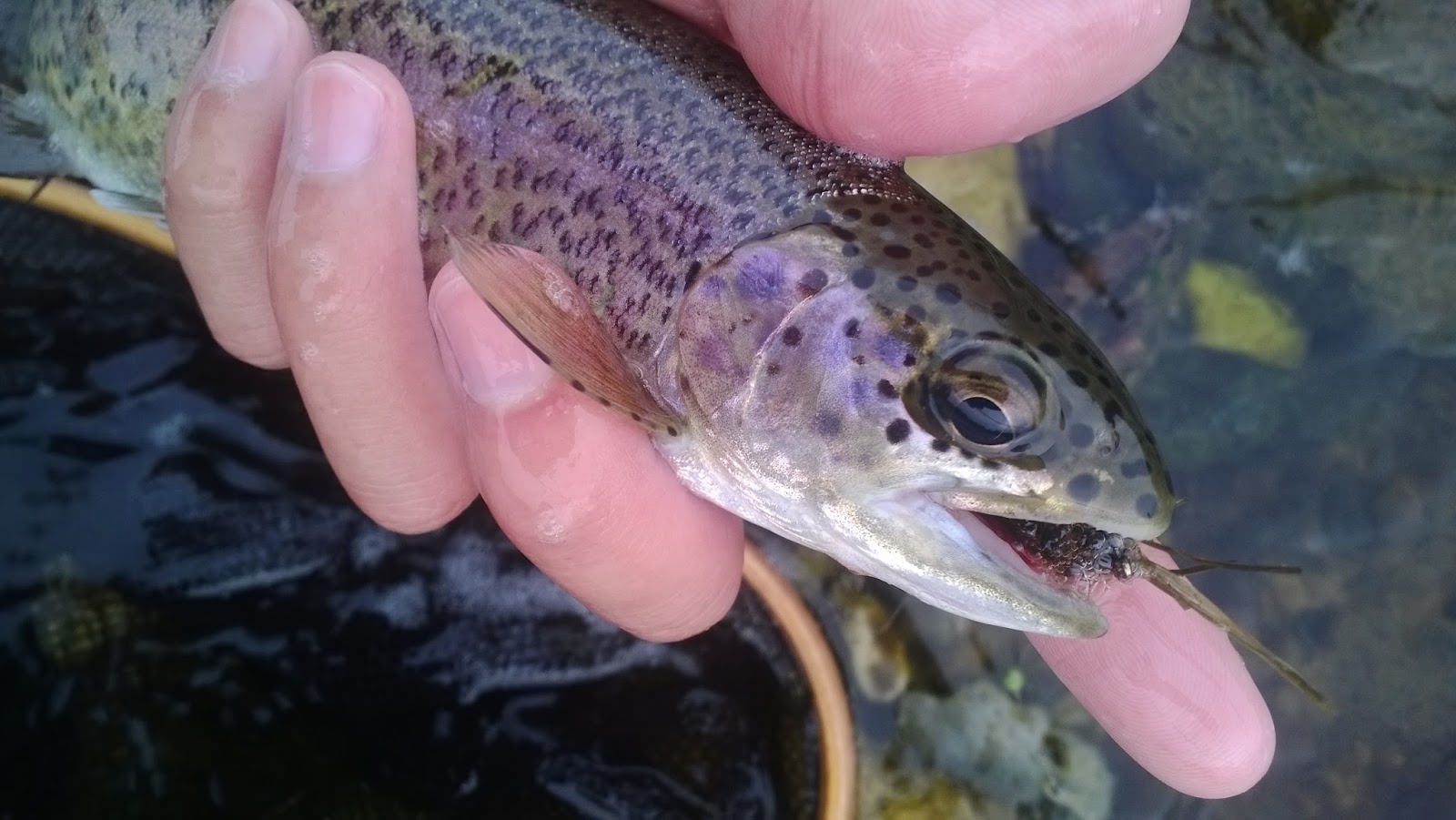 |
| Skwala Hype |
During the winter season the fish will usually tend to hold in slower deeper runs. The more active ones right now seem to be running on the smaller side around 8″ – 12″. I’ve been finding the majority of my fish in the soft seams of faster water. They are grabby and feisty but again they are on the smaller side.
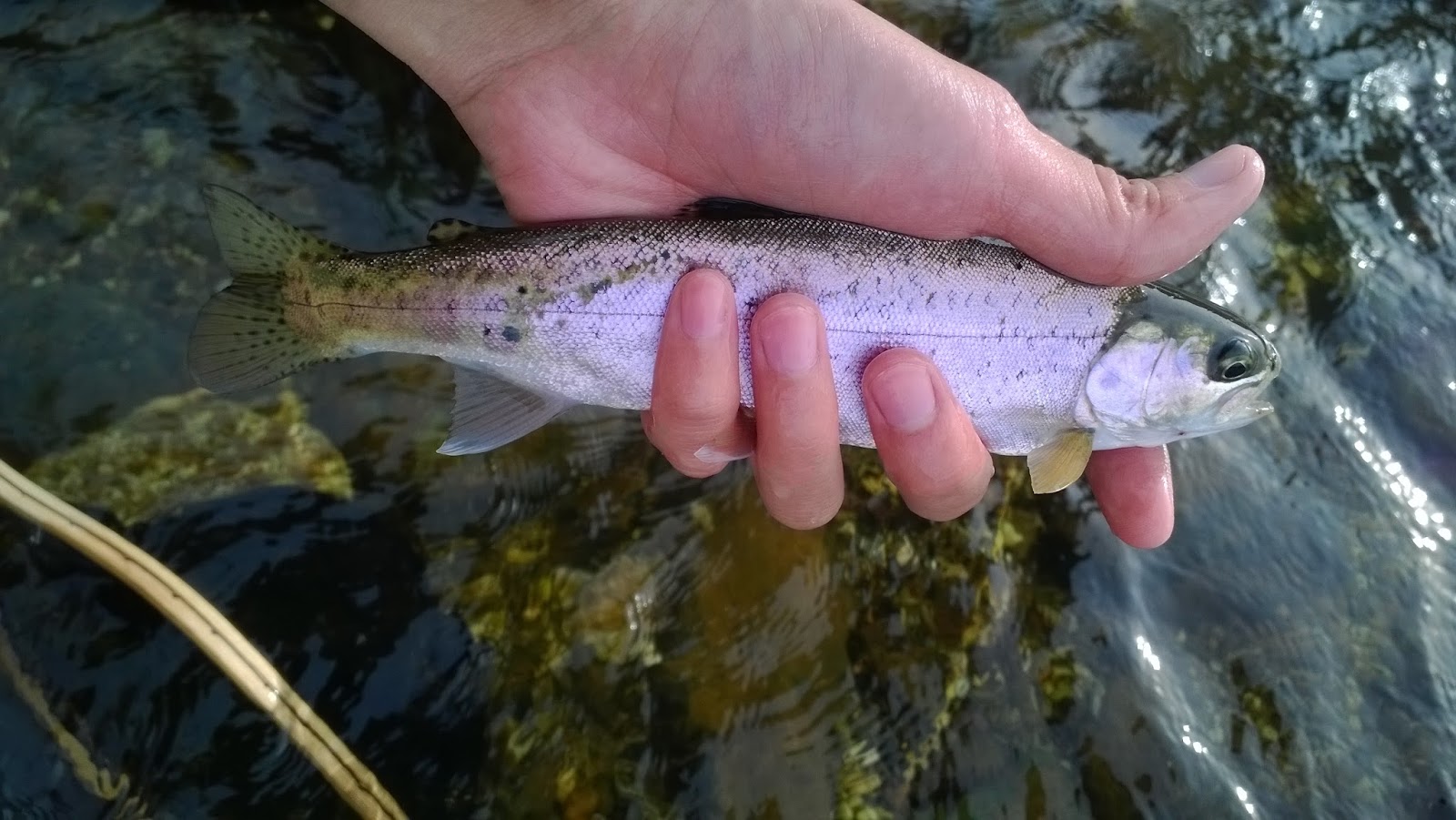 |
| Lots Of Fiesty Dinks |
I like to ditch the indicator when fishing the Yuba. I’ve caught way more fish high-sticking and tight-lining than indy fishing. The only time I pop one on is when I need to fish a wider run with a slower and even current. I believe that an indy-less presentation looks more natural as the flies get dragged by the current. In addition to a natural drag, being able to swing your flies after the dead-drift can also add more dimension to your presentation. Yuba bows strike hard so you’ll often feel it before you see it.
This is perhaps one of the things I miss most about gear fishing, fishing solely by feel which is much more fun.
The swing wasn’t very productive this trip and I believe it might have something to do with the water being low.
Two days later I fished below the bridge and found just what I suspected; quality over quantity. The weather was suppose to be much more severe but after taking a quick look outside and jumping the gun, it turned out to be a nice day with a bit of a breeze and overcast.
I was able to land 3/4 hook-ups and two of the fish netted were over 15”.
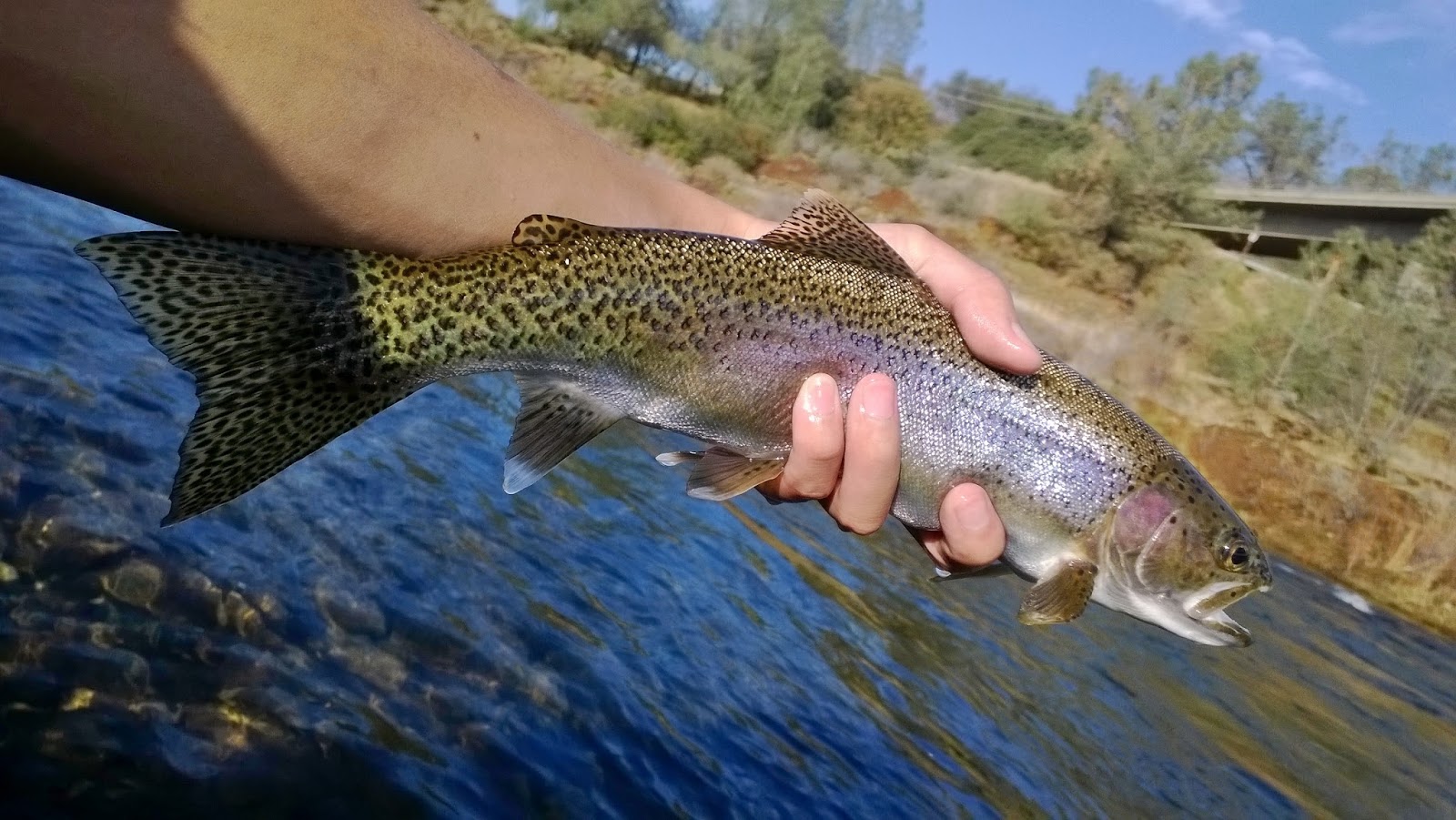 |
| Good Start To The Day |
This recent storm has brought up the flows on many rivers throughout the valley, sierras, and the coast. Hopefully this will add some color to the water and move some fish around. We need more storms like this, keep it comin’ El Niño!
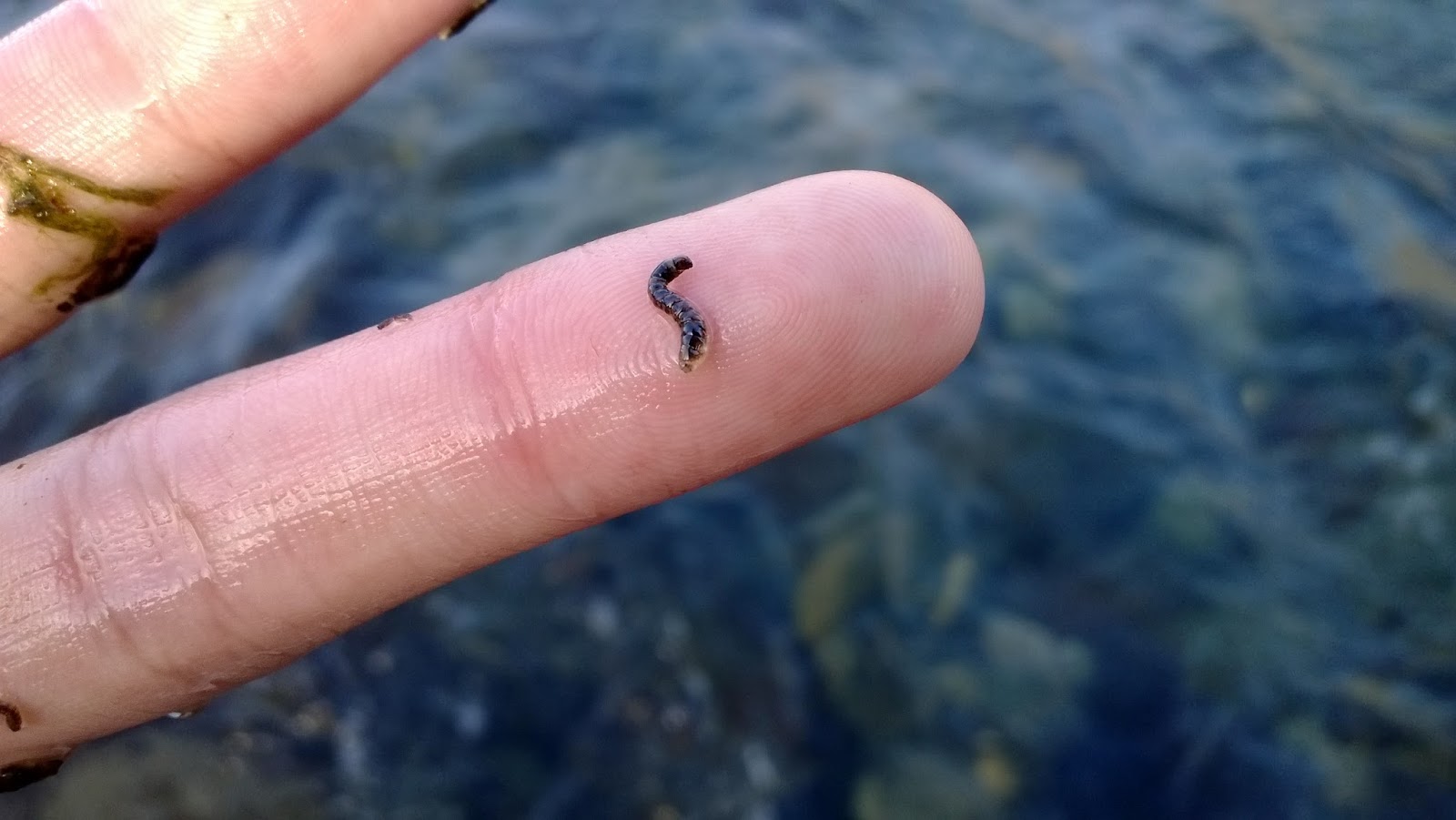 |
| Found A Lot Of These Bugs. But Will They Eat? |
